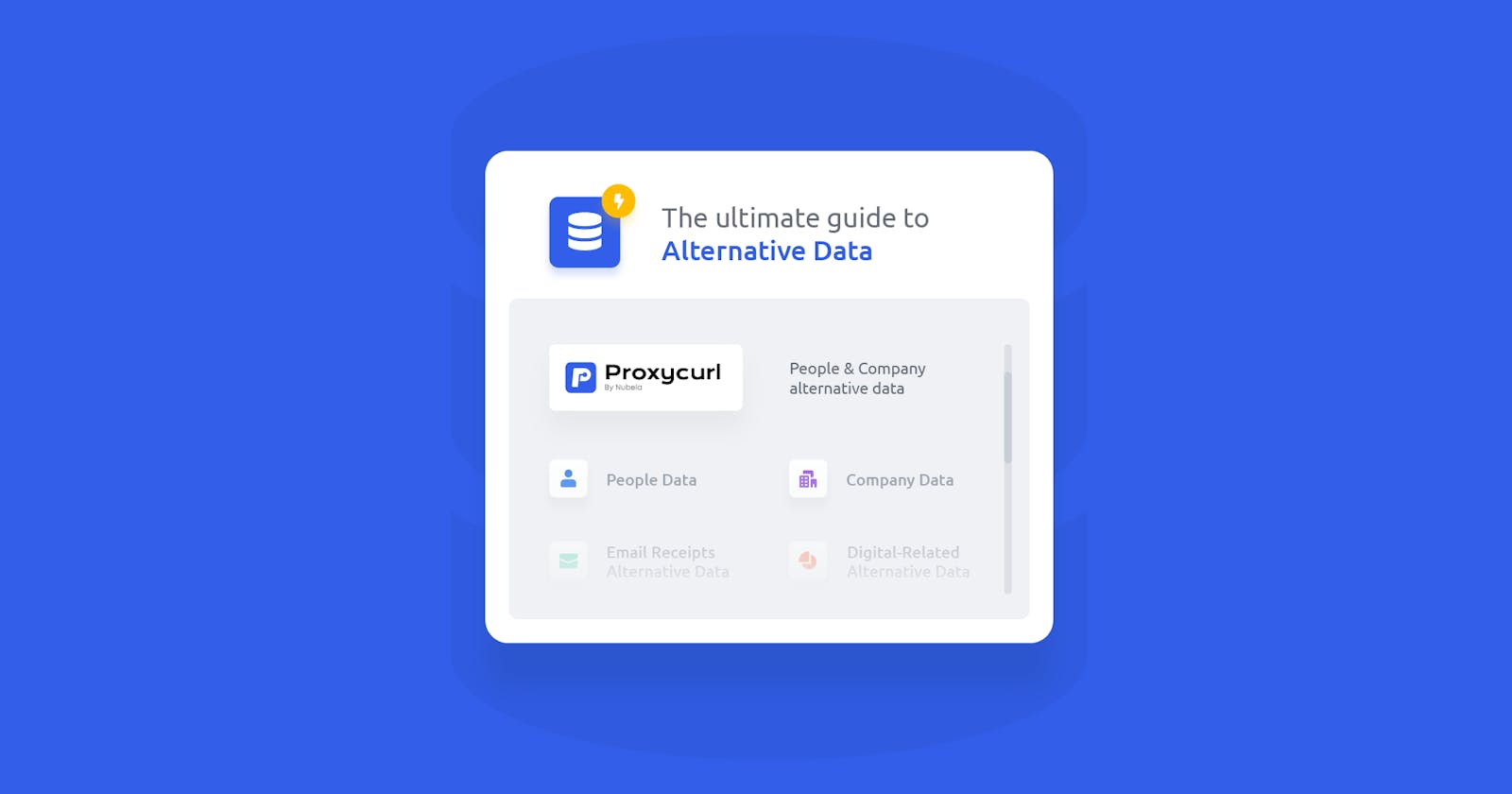Alternative data is a term that is used to describe data sets that are not typically used by traditional financial analysts. While there is no definitive list of what types of data would be considered alternative, there are a few common examples, such as social media data, satellite imagery, web scraping data, and location data.
The use of alternative data is not new, but its use by hedge funds and other institutional investors has increased in recent years. This is due to the growing availability of data, the decreasing cost of data storage and processing, and the increasing sophistication of data analysis tools.
In this guide, we will discuss what alternative data is, how it is used, and some of the benefits and risks associated with its use.
What is Alternative Data?
Alternative data is defined as any data that is not traditional financial data. This can include data from social media, satellite imagery, geolocation data, and more. Alternative data is often used by hedge funds and other financial institutions to gain insights into trends and make investment decisions.
Most alternative data is unstructured, which makes it difficult to analyze. However, there are a number of companies that specialize in collecting and analyzing alternative data. These companies often use machine learning and other advanced technologies to uncover insights that would be otherwise hidden.
While alternative data is still relatively new, it has the potential to revolutionize the way that we make investment decisions. In the future, alternative data may become just as important as traditional financial data in informing investment decisions.
Benefits of Alternative Data
Alternative data is any data that is not typically used in investment decision-making. This can include data sets such as social media, satellite images, and weather data. While alternative data has been used by hedge funds and other institutional investors for years, it is only now starting to gain mainstream traction.
So why the sudden interest in alternative data? The answer is simple: because it works. Numerous studies have shown that alternative data can provide a significant edge when it comes to investment performance. In fact, a recent study by Greenwich Associates found that investors who use alternative data outperformed those who did not by a margin of 6 to 1.
There are many reasons why alternative data is so effective. For one, it can help you gain insights into trends and patterns that would be otherwise hidden. It can also provide a real-time perspective on companies and industries
How to Get Started with Alternative Data
Alternative data is data that is not typically used in financial analysis. This can include data sets such as satellite imagery, social media data, and web traffic data. In recent years, alternative data has become an increasingly popular tool for hedge funds and other financial institutions.
So how can you get started with alternative data? Here are a few tips:
Know what data sets are available.
Understand the data sets.
Find a data provider that offers the data sets you need.
Analyze the data and look for trends.
Make decisions based on your analysis.
Proxycurl has done most of the work for you, all you need to do is navigate to their official website and get started.
The Challenges of Alternative Data
Alternative data is becoming increasingly popular as a source of insights for investors. However, there are a number of challenges associated with using alternative data that must be considered.
First, alternative data generally refers to data that is not widely available or commonly used by investors. This means that there is often a lack of standardization and quality control, which can make it difficult to draw reliable conclusions from the data. Second, alternative data is often unstructured, meaning it is not organized in a way that is easy to analyze. This can make it time-consuming and expensive to work with, especially for small businesses or individual investors.
Finally, alternative data is often collected by third-party providers, which raises concerns about privacy and security. If the data is not properly protected, it could be leaked or used for unauthorized purposes.
The Future
As we move into the future, alternative data is becoming increasingly important. This data includes things like social media data, satellite data, traffic data, and more. This data can be used to gain valuable insights into all sorts of different areas, from the stock market to consumer behavior.
Alternative data is changing the way businesses operate and giving them a new way to understand the world around them. As we collect more and more data, the potential uses for it are only going to grow. So what does the future hold for alternative data? Only time will tell, but it's sure to be exciting.
Getting started with this exciting way of working with data? Learn more and start using Proxycurl today.
